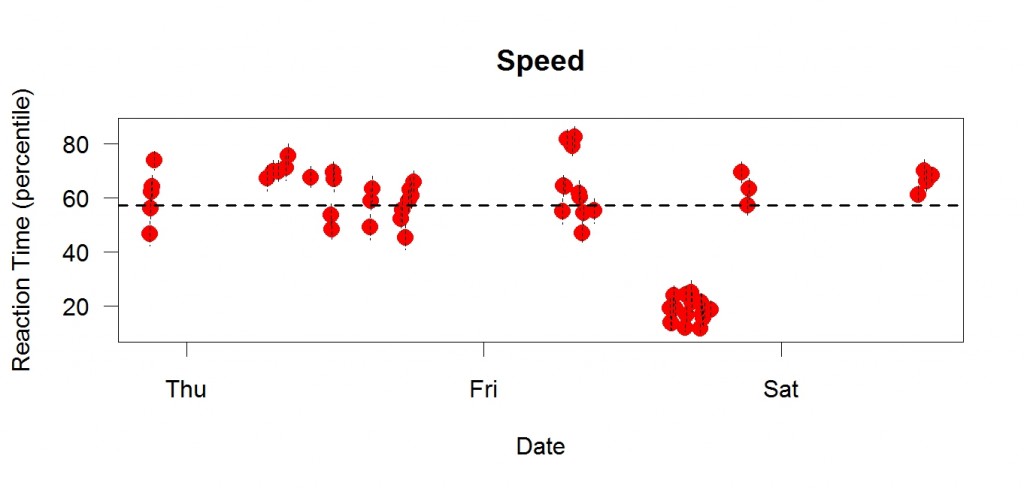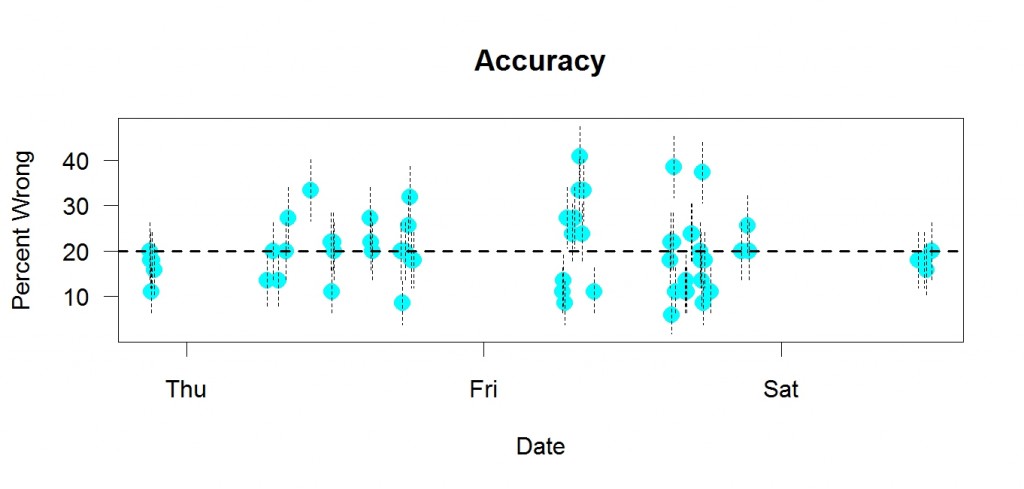A female American engineer named Parrish Hirasaki has started a website devoted to the idea that prenatal ultrasound is a major cause of autism. It includes a long list of supporting research. In spite of all this research, “as of spring 2011, analyzing the ultrasound results was not among the 23 hypotheses [about the cause of autism] being tested by the National Children’s Survey”, says the website.
I first heard this idea from Caroline Rodgers, a science writer, and have blogged about it several times. Nevertheless, the website’s home page taught me several things I didn’t know:
1. “A recent major study of twins supports earlier studies in concluding that environmental exposures during or shortly after gestation cause a majority of autism cases.” This is inconsistent with many other explanations (e.g., vaccine, genetic).
2. “In a recent study, autistic children had reduced connectivity between the two sides of the brain.” Which supports the idea that neural misdevelopment is a cause of autism.
3. “Twenty years ago, the FDA increased the allowable intensity of prenatal ultrasound 8-fold to improve images. Autism rates have risen dramatically since that time.”
4. There is “widespread misunderstanding among ultrasound operators of the safety guidelines.”
5. “A fast-growing commercial business is keepsake ultrasound photos. Franchisers advertise that no medical background or certification is required.”
I asked Hirasaki a few questions.
How did you become interested in this?
My age and my profession led me to the theory that the rise in autism is caused by exposure to prenatal/neonatal ultrasound.
- When my last child was born in 1978, there was one ultrasound machine serving the entire population of Houston.
- My work experience in the industrial and aerospace industries was extensive in heat and vibration.
- For several decades, my work included industrial instrumentation in chemical plants and refineries. Most such instruments require routine calibration to stay accurate.
- In the space program, there are always redundant devices because mechanical and electrical equipment may malfunction.
- A first cousin died at age 6 of cancer caused by x-ray overdose in the 1940′s. I am old enough to remember getting my feet x-rayed at the shoe store.
Who else, in addition to Caroline Rodgers, has independently had this idea and written or posted about it?
Manuel Casanova, a neurologist. Nancy Evans, a science writer.
When you started looking into possible causes of autism, did you look into other possible explanations?
No. I asked myself what had changed about having a baby. Ultrasound seemed to be the obvious major change. Exposure to caffeine, smoking, alcohol and medications had all decreased.
Was there any particular evidence that you found especially persuasive?
On my website, there are 37 papers pertinent to the topic. My primary theory is that overexposure is the cause. The most persuasive evidence that points to this is:
- The girls in the Kaiser-Permanente study who have the highest exposure to ultrasound during the second trimester have more than double the expected rate of autism.
- Interruption of the neural migration patterns in the brains of the overexposed mice in the Yale study.
- A known cause of autism is the mother having an infection. One theory is that as the mother’s body fights the infection with a fever, the rise in temperature of the fetal brain causes the damage. The temperature rises in tissue exposed to ultrasound are reported in a paper which calls for the FDA to examine the current allowable limits.
- The much higher rate of autism for children who weighed less than 4.5 pounds at birth. The medical and AIUM protocol for infants this small is an immediate head ultrasound.
What has made it difficult for the research community to find this?
- The researchers have education and experience [and funding — SR] in medicine, biology, genetics. This is where they look.
-
In the 1950′s, the FDA turned the regulation of medical ultrasound over to the American Institute for Ultrasound in Medicine (AIUM) which is funded by the government and the manufacturers. In November 2011, I expressed my concerns via email to the AIUM Bioeffects Committee. The chair responded that the AIUM monitors the topic and has conducted a thorough
search of existing literature (2008) and found no link except the “weak association” in the Kaiser-Permanente study. The report states that there are potential risks to administering ultrasound tests, which include “postnatal thermal effects,
fetal thermal effects, postnatal mechanical effects,
fetal mechanical effects, and bioeffects considerations for ultrasound contrast agents.” Another section says “the long-term effects of tissue heating and cavitation have shown decreases in the size of red blood cells in cattle when exposed to intensities higher than diagnostic levels. However,
long-term effects due to ultrasound exposure at diagnostic intensity is still unknown.” In 1992, the AIUM and the FDA increased the allowable intensity of prenatal ultrasound 8-fold without knowing whether it was safe. Twenty years later, they still don’t know.
- Engineers who could do such research receive funding from the manufacturers. Such a researcher would be unlikely to propose research that could decimate the industry.
- This is the classic search for a needle in a haystack. Less than 1 in 300 ultrasounds is causing noticeable brain damage.
I would add that links between sonograms and left-handedness are more evidence that sonograms can cause important brain changes. Here is a doctor who does sonograms dismissing the connection but what I find important is that the connection has been found repeatedly.
 This is me a few days ago. I did a choice reaction time task many times. Each dot is a session with enough trials to supply 32 correct answers.The y axis is in “percentile” units, meaning speed relative to recent performance. If my speed was at the average of recent performance, the percentile would be 50, for example. Higher percentiles = better performance = faster (shorter reaction time). Each point is a mean; the vertical bars are standard errors. The dotted line is the median of the means.
This is me a few days ago. I did a choice reaction time task many times. Each dot is a session with enough trials to supply 32 correct answers.The y axis is in “percentile” units, meaning speed relative to recent performance. If my speed was at the average of recent performance, the percentile would be 50, for example. Higher percentiles = better performance = faster (shorter reaction time). Each point is a mean; the vertical bars are standard errors. The dotted line is the median of the means.